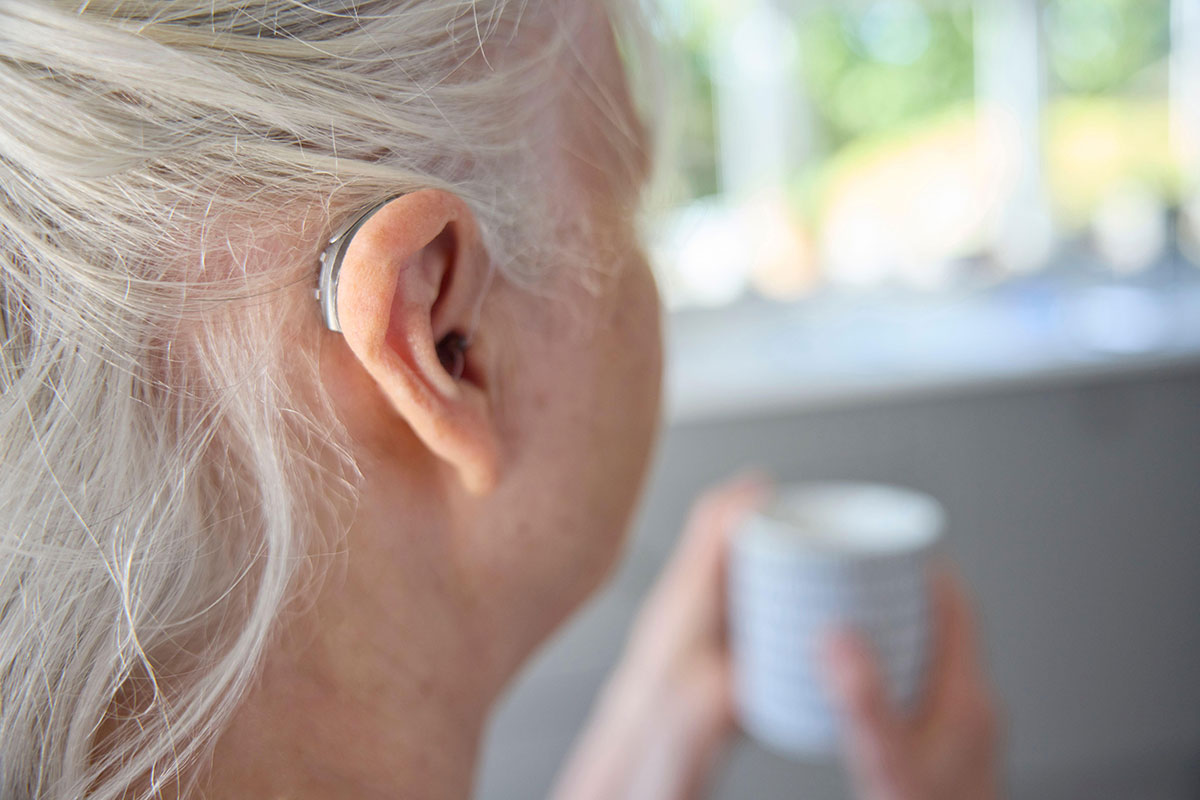Which types of fire safety devices can help deaf residents?
Housing secretary Michael Gove recently underlined the importance of establishing personal evacuation plans for disabled and special needs residents. Andy Speake from fire safety specialist Aico and Stephen Johnson, an NHG resident who has a profound hearing impairment, explain how technology can be adapted for people who are deaf or hard of hearing

In association with:


In the UK, one in five adults have hearing loss and it is estimated by the Royal National Institute for Deaf People using Office for National Statistics data that the 12 million people who have hearing loss, tinnitus or are deaf will increase to 14.2 million by 2025. Inside Housing interviewed Andy Speake, national technical manager at Aico, and Stephen Johnson, chair of the Notting Hill Genesis (NHG) resident scrutiny panel in London, who has a profound hearing impairment and is tone deaf, so he is unable to hear most sounds – such as a doorbell, phone or fire alarms – unless he is wearing hearing aids, to find out what landlords can do to ensure deaf people are safe in their homes.
What fire safety technology for deaf and hard of hearing people is there on the market today?
Andy Speake (AS): The most common solution is a strobe. It can be wall or desk-mounted; the lens on the strobe is curved, so you get a massive degree of visibility. Attached to that is a vibrating pillow pad, which would typically be installed under a pillow, but some people prefer to place it under their ankles. The alarms can be hardwired, but the easier way of doing it is by radio. It can be a tool-free installation. They have their own battery back-up, which will keep the strobe and the vibrating pad powered for up to 72 hours, even if the mains power is off in the property.
Stephen Johnson (SJ): A vibrating pager can be worn during the day to alert a resident to a fire or smoke alarm. All devices should be tested regularly. If mains-powered, they should also have a battery back-up, in case of a power failure. If the system is unplugged, the battery back-up will keep working for at least 72 hours.
How has this technology developed over recent years?
AS: One area is in fire detection itself. Previously, alarms used ionisation technology to detect fires. These alarms could only tell if smoke was present or not, they couldn’t tell the difference between a toaster that’s been on too long or a genuine fire, resulting in nuisance alarming. Now we use optical technology, which uses light to measure the density of the smoke. They are far more sensitive.
Does digital and Internet of Things technology have a role to play?
AS: Absolutely. Modern alarms don’t just transmit an alarm signal; we can find out how old that alarm is, how often it’s being tested, if there’s a pattern of alerts that could be addressed. And for the first time, we’re seeing how many times people remove their alarms. It means landlords can be a lot more reactive.
What should social landlords consider when installing these devices?
AS: The needs of somebody who’s deaf or hard of hearing is something that not everybody automatically thinks about, certainly in general needs properties. But equally, I don’t think it’s well-known just how easy it is to [meet those needs], as long as you can have an existing system that has been installed in the past five or six years. It’s simple to install these alarm modules – it is a push-fit connection, with no tools required – then you plug in the deaf and hard of hearing kit, push a button on each to get them talking to each other and you have just extended that system within five minutes.
SJ: Landlords should ensure their staff know about the range of devices that can help residents feel safer in their own homes. It helps to be informed about the latest gadgets and equipment; there are numerous housing industry conferences held throughout the year, where companies specialising in fire safety advice can be contacted. Many residents are often referred to their local authority occupational therapy team for devices to be installed – but referrals can take time to arrange. Landlords should be more proactive in making sure deaf and hard of hearing residents get the practical help they need, which could ultimately save their life. Housing officers and contractors should take care when talking to residents about their health needs, especially if it concerns a disability such as hearing loss. Directly asking residents might cause them to feel embarrassed. Instead, asking how the landlord can be of assistance, especially when it comes to making them feel more safe in their home, usually helps break down barriers.
How important is communication and education?
AS: Installing these products is not complicated. You don’t need to be electrically qualified – anyone can do it. But when you’re looking at more specialist needs, a broad range of people are involved, such as maintenance staff, on-site wardens, the people who are specifying the product – but they may not necessarily know about all the technology available. We could be talking to one particular individual within an organisation, explaining the technology, but that doesn’t necessarily filter through. I hear that’s often the case with a lot of organisations; the knowledge is not necessarily shared among everyone. So I would like to see more education full-stop.
SJ: For housing associations and council landlords, fire risk assessment communication is essential. Landlords should not only have precise and up-to-date information about which residents are classed as vulnerable or have a personal emergency evacuation plan – this information needs to be shared with appropriate agencies such as the fire service. Landlords should ensure this information is regularly updated and is easily accessible in an emergency.
Stephen Johnson
Stephen Johnson is chair of a scrutiny panel for Notting Hill Genesis residents in London, and a member of the Tenant Advisory Panel, which is working with the National Housing Federation on the Together with Tenants Charter. He also sits on an LGBT+ independent advisory group with the Metropolitan Police.
How can we improve fire safety for deaf and hard of hearing people?
AS: Building regulations are massively different throughout the UK. Typically, you’ll find what Scotland and Northern Ireland are doing tend to be the best. In the past couple of years, Scotland made it the law to have a smoke alarm in every kitchen, living room and escape route – all of them interconnected. That’s been a game-changer in Europe, and it should be harmonised across the UK. That would be huge. Then there’s educating people on the technology available. These products aren’t new on the market – but getting that education out there would be a significant step as well.
SJ: Residents want to know – indeed, they have a right to know – that their home is safe. Landlords can reduce fire risk for vulnerable residents by using person-centred fire risk assessments. The purpose of these is to identify those who would be at a higher risk in the event of a fire. This will mean a high-risk profile being created and involve appropriate measures being put in place, such as personal emergency evacuation plans. There is a lot of help available for anyone who is deaf or hard of hearing to enable them to be alerted to smoke or fire, especially when they are asleep. Finding out what help is available should not be the sole responsibility of residents; social housing managers and staff can become better informed about this important issue. Ultimately they will be helping residents feel safe in their own home. Listening to and engaging with residents themselves – particularly those living with a disability or health condition – is also a valuable and rewarding experience. If social landlords haven’t already got a health and disability forum or group for their residents, like the one I belong to at Notting Hill Genesis, then my advice is to consider setting one up.












